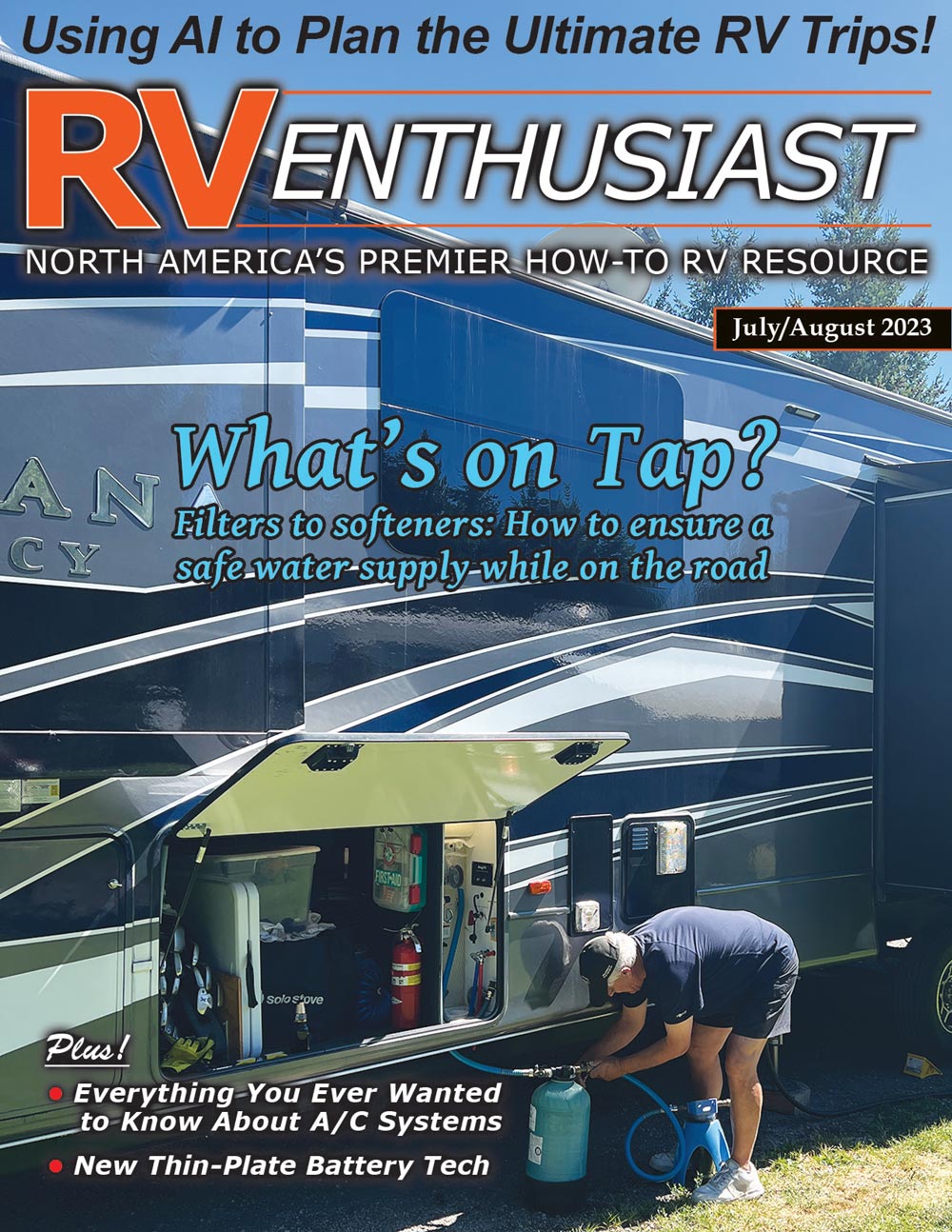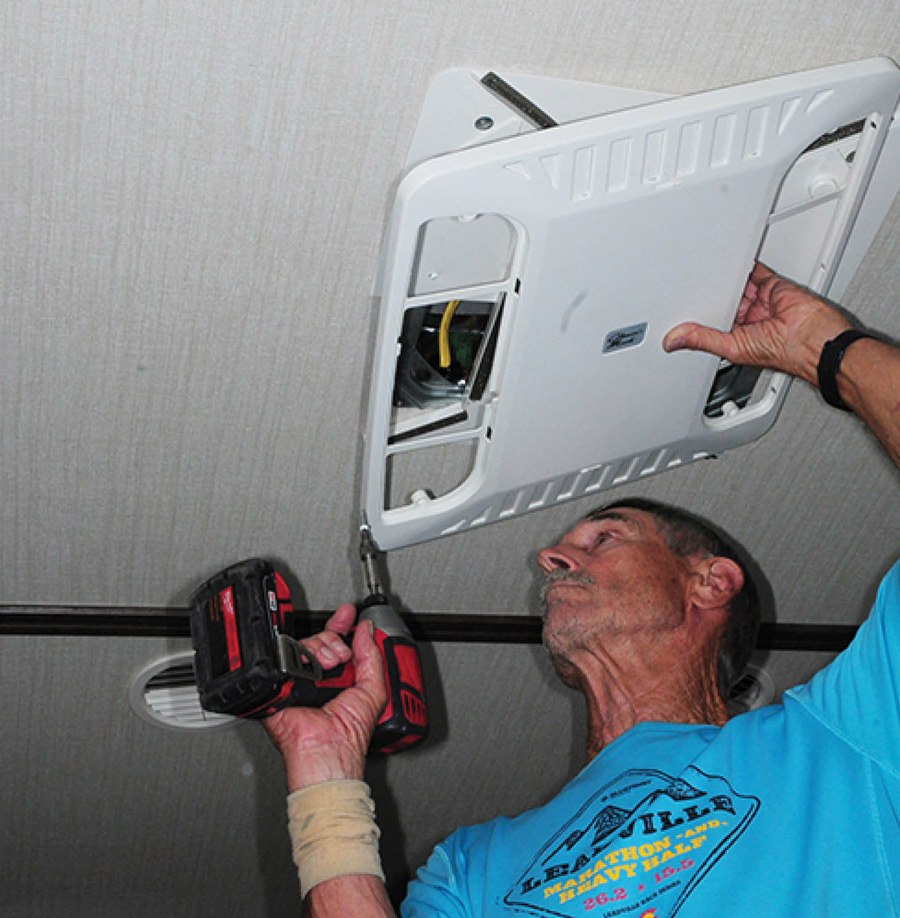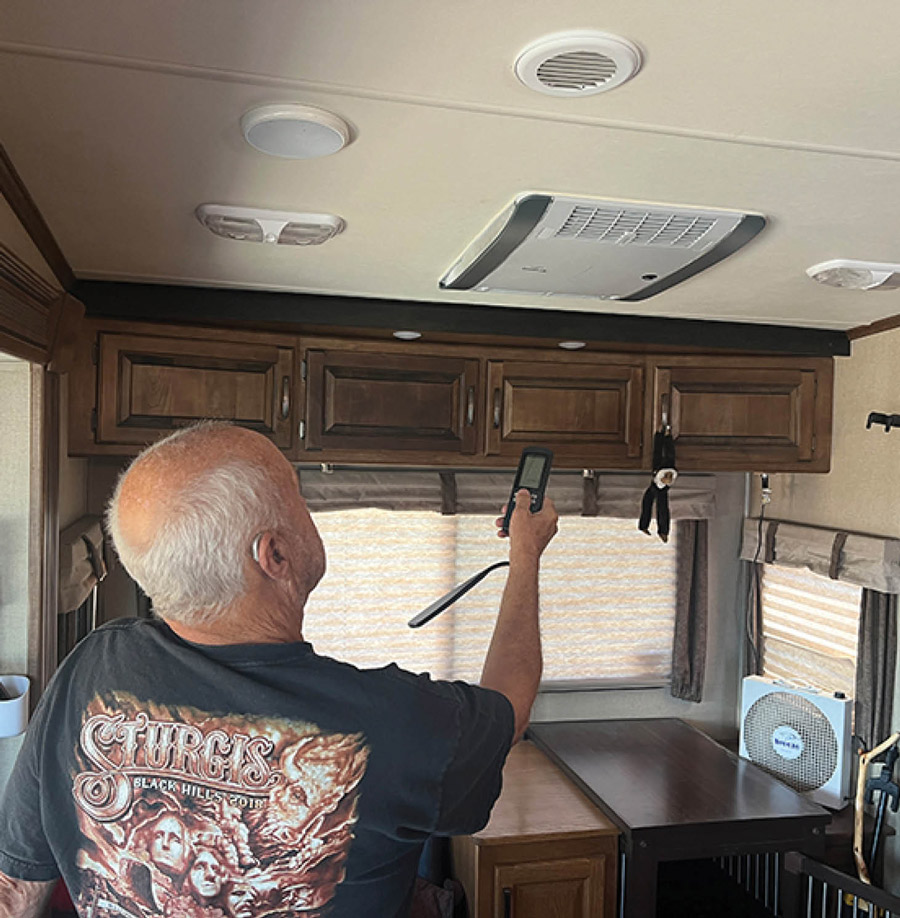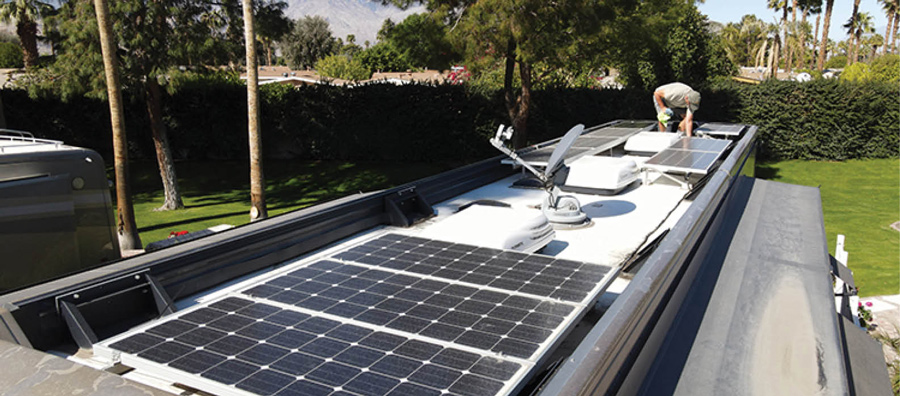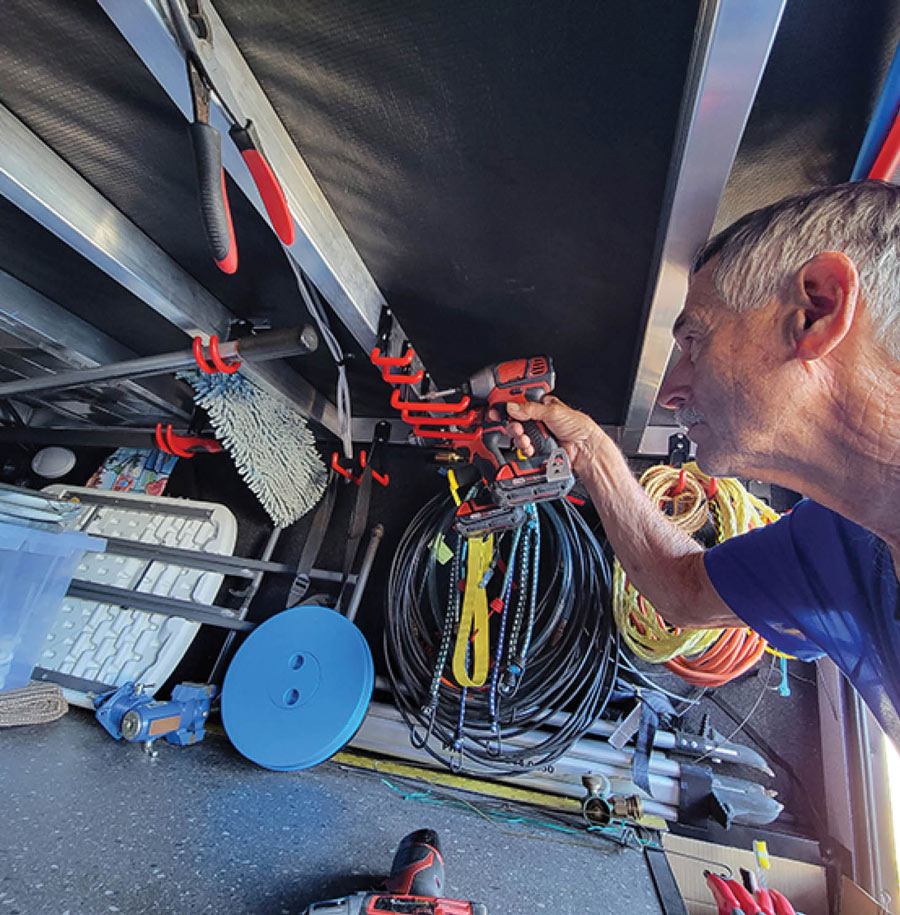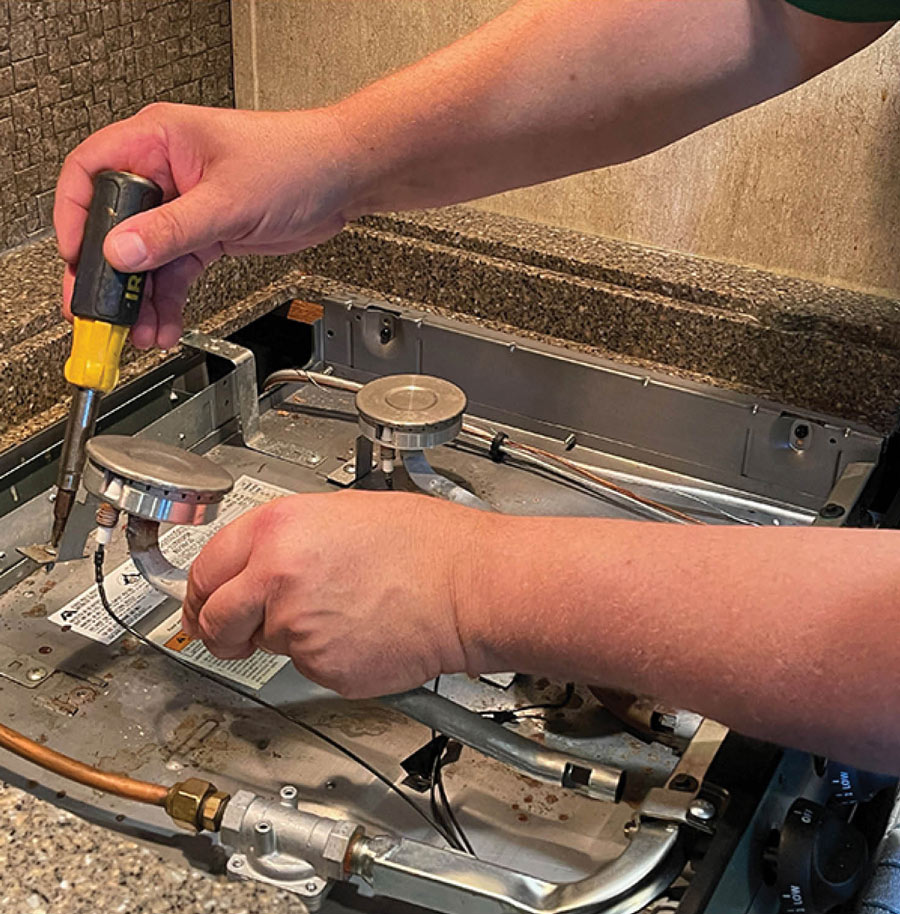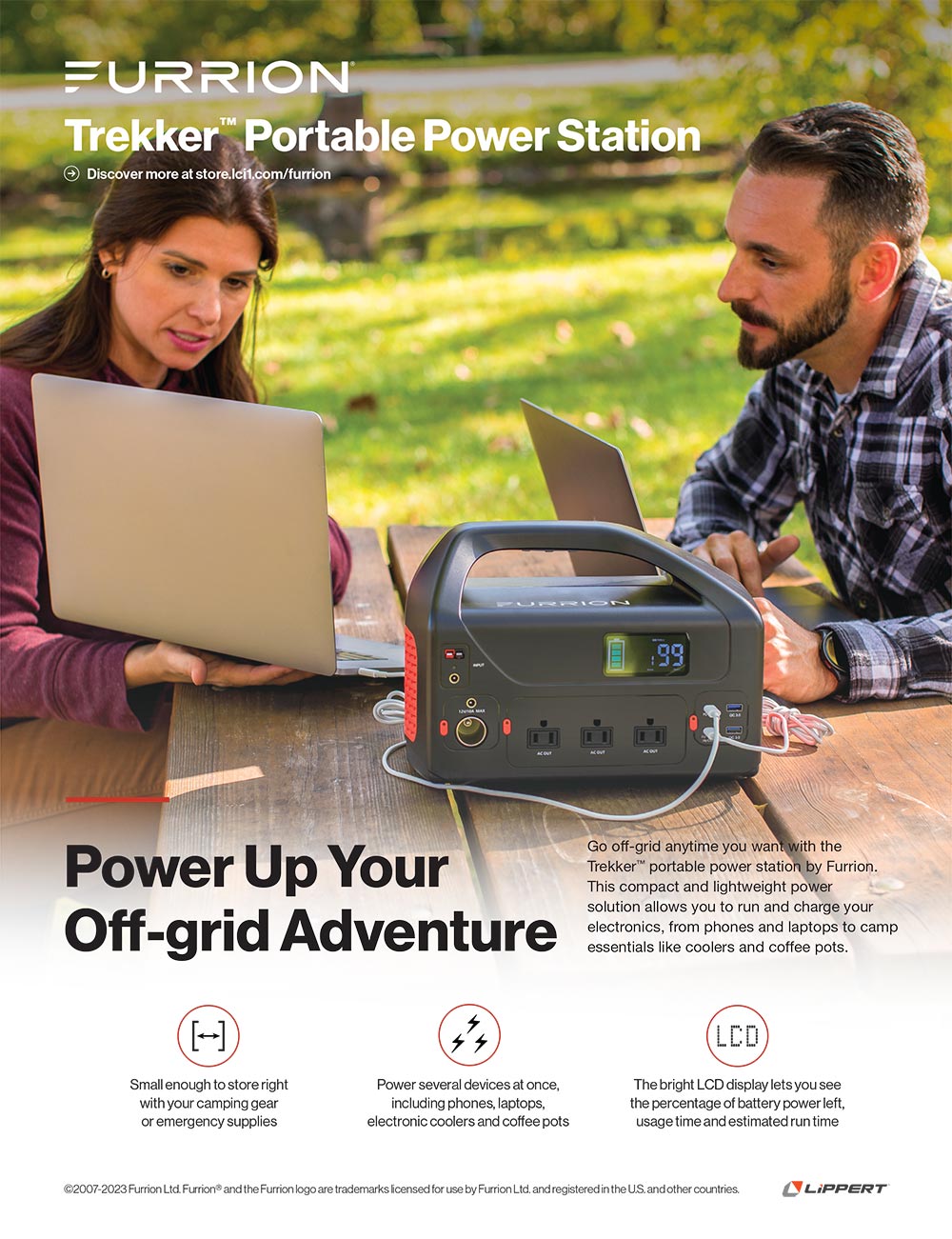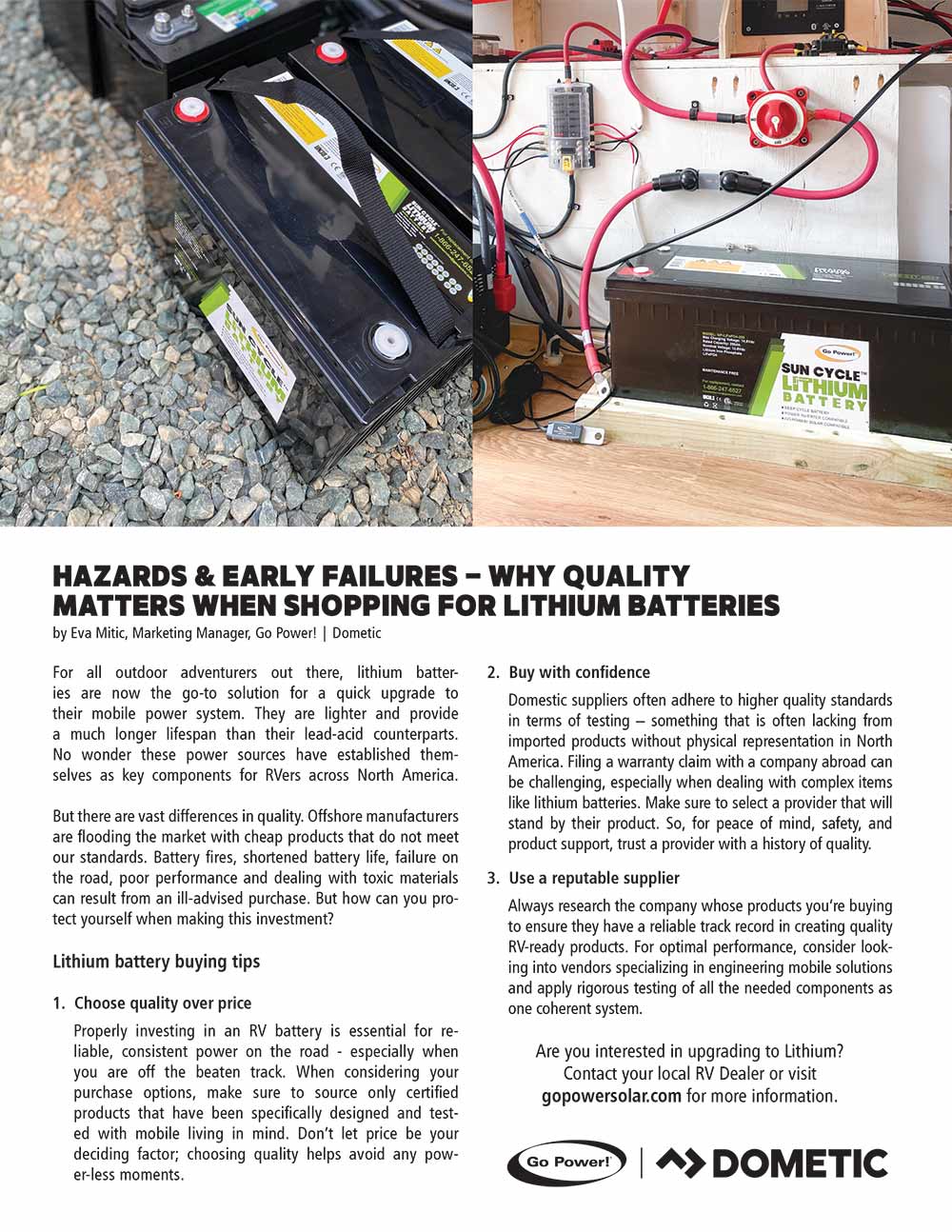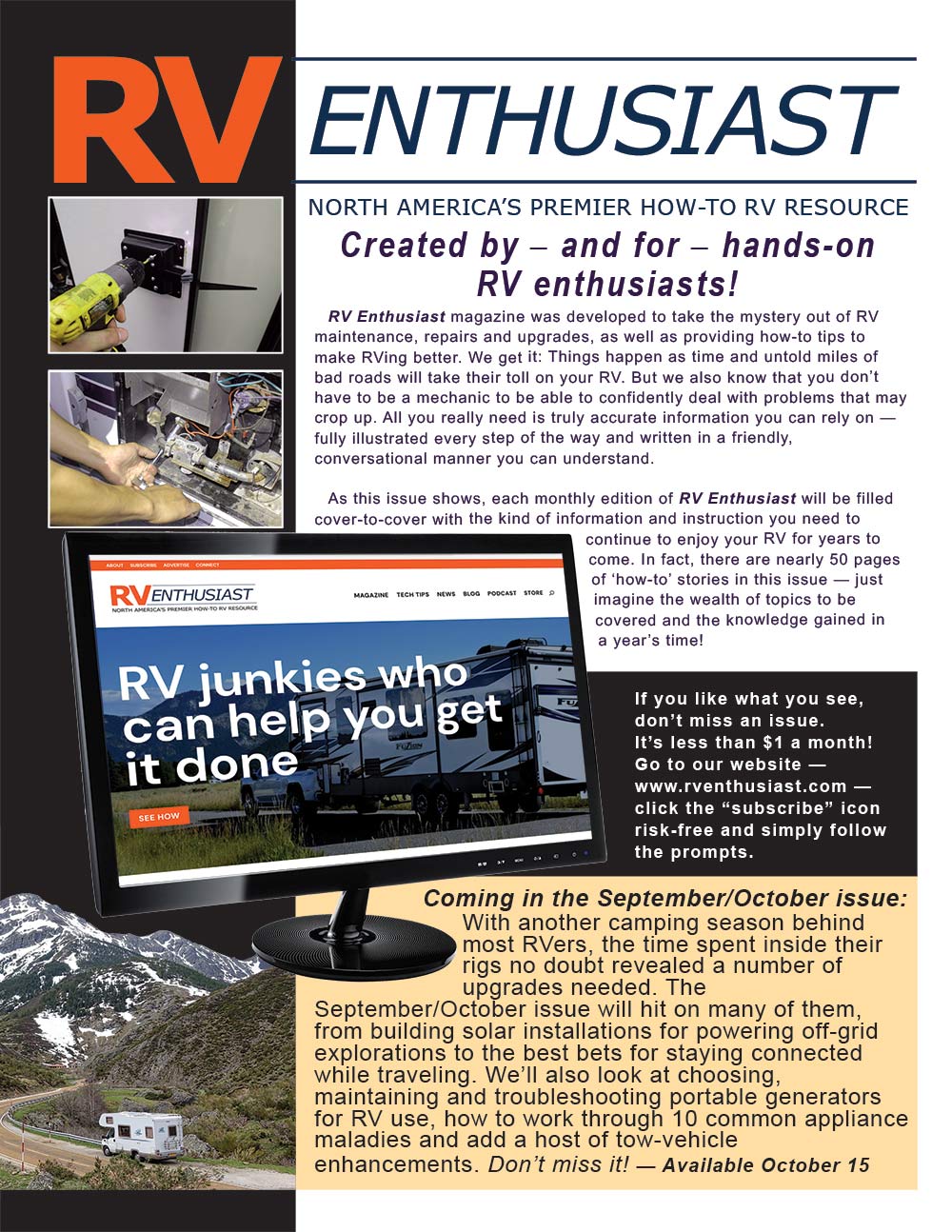Subscriber Access Only
Special Offer
Get 1 year of RV Enthusiast Magazine for just $9.99
Unlock My Offer No ThanksAlready a subscriber? Click here to access full issues.

Putting together an RV vacation oftentimes requires jumping between upwards of a dozen different websites. AdventureGenie is the first “smart” browser-based system capable of recommending complete itineraries based upon a user’s evolving wants and needs. It’s also the first “adventure planning tool” to take advantage of emerging AI in the travel sector.
Regular air-conditioner maintenance will keep air flowing and cool — while failure to assure proper function will lead to poor efficiency and reduced cooling. Fortunately, the maintenance checklist isn’t that long — and many do-it-yourself RVers can get it done themselves. Keep the A/C clean can result in big performance gains. Or, you can just sweat it out in the heat.
The latest crop of RV air-conditioners no longer belongs to your parents’ generation. Advances in power efficiency — including easier starting — combined with noise mitigation allow RVers to take hot summer days and nights in stride. Here’s everything you ever wanted to know about keeping cool, from A/Cs to portable fans — and there’s even a look at evaporative coolers.
There is only so much room for “stuff” in an RV — but chances are, you’ll end up needing something the first time you leave it behind. As we discovered, though, one way to maximize the space available is to add hooks to your storage compartment to hold cordless tools (and even shovels and brooms) while freeing up the floor of the compartment for other necessities.
Pure water is no longer guaranteed, especially when visiting unfamiliar places. Problems can and do sometimes crop up as RVers embrace boondocking and set up camp well away from campgrounds fed by city water systems. Fortunately, water purification and filtration systems for RVs have reached new levels and will keep you safe while controlling noxious odors and taste.
Being able to camp with all of life’s basic necessities has fueled the RV lifestyle. That holds especially true of galley equipment. Being able to grab a cold one from the refrigerator or cook a hot meal in an oven or on a cooktop makes the outdoors more livable — when everything works as advertised. But extending the life of your kitchen equipment isn’t difficult.
(805) 320-6909
[email protected]
EDITOR – Bruce Hampson
(574) 584-4616
[email protected]
TECHNICAL DIRECTOR
BILL GEHR
(805) 340-5015
[email protected]
ART DIRECTOR – MIKE ACCUARDI
[email protected]
26362 Douglas ave., Elkhart, in 46514
 AFFILIATE NOTICE: RVE Media Group LLC provides links to vendors and products, such as an Amazon Associates account, for informational purposes, but that may provide a commission if you purchase from that link. We often label these links with language that provides transparency if the destination is an advertiser, affiliate, or partner. Products are often provided to RVE at little/no cost for editorial testing purposes by vendors/suppliers. Under no circumstances does this affect the results of the test or install as published in RV Enthusiast. Sponsored content is identified as such directly on the content.
AFFILIATE NOTICE: RVE Media Group LLC provides links to vendors and products, such as an Amazon Associates account, for informational purposes, but that may provide a commission if you purchase from that link. We often label these links with language that provides transparency if the destination is an advertiser, affiliate, or partner. Products are often provided to RVE at little/no cost for editorial testing purposes by vendors/suppliers. Under no circumstances does this affect the results of the test or install as published in RV Enthusiast. Sponsored content is identified as such directly on the content.
PRIVACY POLICY: Our complete privacy policy can be found at https://rventhusiast.com/privacy-policy/
ike many of you, I’ve become somewhat enamored of late with the concept of 12-volt lithium-ion batteries. Realistically, what’s not to like? Among their other stated benefits, lithium batteries aren’t hampered by a low state of charge, are lighter and offer much greater charge/discharge cycles to last considerably longer.
Of course, the downside to this is that new technology brings with it a high price tag. Lithium batteries are significantly more expensive than their more traditional lead-acid counterparts — they can cost many multiples, in fact — and that’s what got me reevaluating things, because according to the most recent RV market commentary issued by Black Book and reported by RVBusiness magazine, the average age of towables going to auction in August 2023 was just four years.
Divide that big up-front cost by four, and the benefits of lithium don’t seem nearly as vast — especially given the fact that for the majority of RVers, the cumulative days they spend camping only amount to one or maybe two months per year.
That said, lithium still offers some pretty cool features not available in lead-acid batteries that make them the “must-have” products of the moment…right?
News & Notes
NRVTA Releases PRO Version of Home-Study RVTechCourse

The National RV Training Academy (NRVTA) recently announced the release of a PRO version of its RVTechCourse home-study RV maintenance and repair course. The PRO version includes hands-on labs offered during live training at NRVTA’s RV Fundamentals class. Each lab includes handouts and other resource materials received by students attending in person, as well as videos of Todd Henson, NRVTA’s director of education, or one of the school’s technical assistants, going over a specific component.
The labs extensively cover virtually everything associated with RV repair and maintenance, including electrical and power systems; propane systems; air-conditioning and refrigeration; water heater and furnace operation, maintenance, safety issues and troubleshooting; wheel bearings and brakes; and RV exteriors — including roof maintenance, slide outs, landing gear, tires, chassis, leveling jacks and other components of an RV’s underbelly.
“The PRO course is all about saving time and saving money,’ said Henson. “Owners do not want their RVs sitting at a dealership for a month or two waiting for something to be repaired, when the owner could fix it themselves.”
Sponsored Content

That’s a lot to ask of a 12-volt DC battery system.
Add to that, many RV enthusiasts spend significant time boondocking (without a grid connection), sometimes in remote or difficult to access locations. It’s times like these where dependence on batteries is high — and durable, reliable batteries really earn their keep. Additionally, RVs that are driven only seasonally or occasionally also must run after being idle — and often unmaintained — for a significant amount of time.
These demands justify a premium product with greater power that also dependably supports house loads, especially when traveling in remote locations. Auxiliary power for house loads requires deep-cycling capability to provide a low, but sustained, current with intense discharges that would deplete a starting battery.
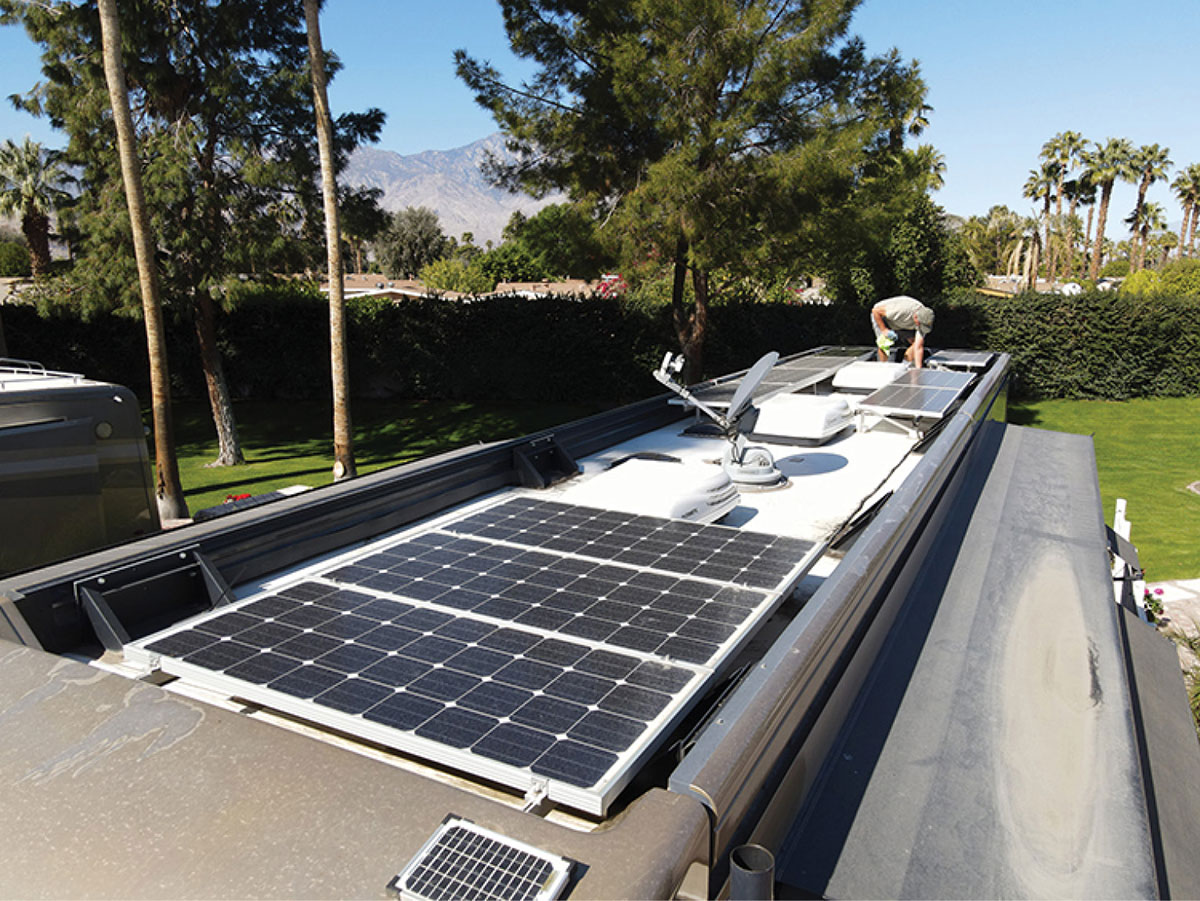
—John Augusta
There are a couple of problems that I can think of right off the top of my head. You did not give me the wattage ratings of the solar panels, which could make quite a bit of difference; the bigger the panel, the more amperage that would be supplied to the charge controller running through the 10-gauge wire. If all six panels are run in parallel, the 10-gauge wire would absolutely not be big enough. If this is the case, it will take a 6-gauge wire, minimum, that is routed to the charge controller, assuming that the panels are rated at 100 watts or larger.
If two panels are wired in series, giving you 24 volts DC, and the three pairs then wired in parallel to the charge controller, the 10-gauge wire should be able to handle all of the panels. The real problem may be the charge controller not being large enough to handle the amperage output of your panels. That, of course is dependent on the output of all six panels.

rying to describe how trip planning “used to be” to anyone raised using smartphones, websites and social media is akin to explaining television sets that pulled in just seven major channels or rotary-dial telephones that only provided a modicum of privacy if your parents splurged on a 50-foot power cord so you could take it to another room.
And if you think that’s tough, just mention once-popular transistor radios, 8-track tapes, shag carpeting and disco music.

rying to describe how trip planning “used to be” to anyone raised using smartphones, websites and social media is akin to explaining television sets that pulled in just seven major channels or rotary-dial telephones that only provided a modicum of privacy if your parents splurged on a 50-foot power cord so you could take it to another room.
And if you think that’s tough, just mention once-popular transistor radios, 8-track tapes, shag carpeting and disco music.
 Flowing Freely
Flowing Freely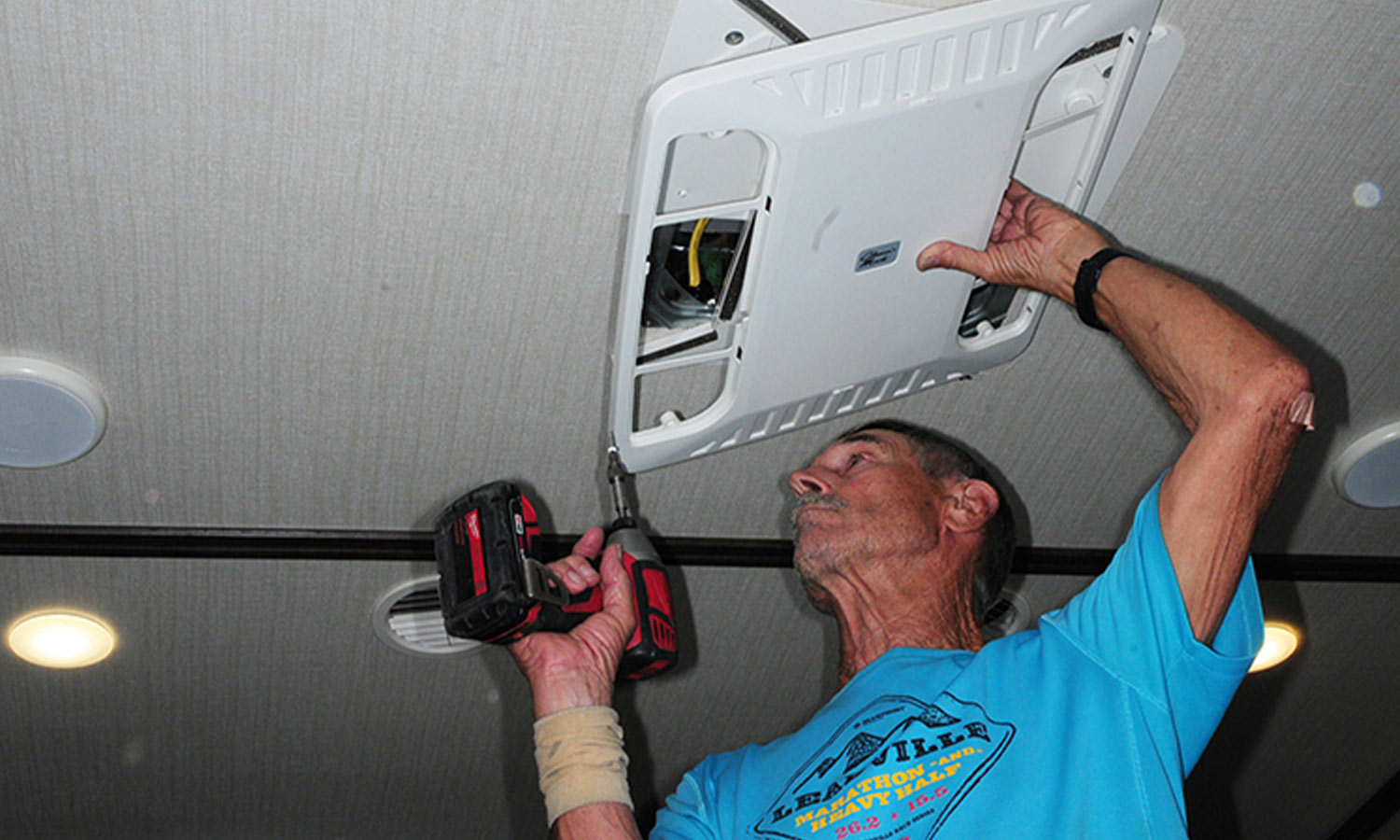
ummer heat drives most of us inside our RVs where, fortunately, the air-conditioner(s) purrs away, dropping the temperature to comfortable levels. It would be nice if all we ever had to do was turn it on and set the thermostat, but that’s not reality. Neglecting air-conditioner maintenance can lead to poor performance or even total failure — and if Murphy has anything to do with it, failure only happens when the temperatures are extreme and the interior feels like an inferno.
Fortunately, the maintenance checklist is not that long and many do-it-yourselfers can do the work themselves, unless they are not comfortable on the roof of an RV. Keep the A/C clean and you can realize big hikes in performance.
In its simplest form, cleaning the return air filter(s) reaps big rewards, unless there is a component failure. Typically, all you need is a little soap and water to clean the filters. These filters are attached to the air-distribution box (ADB) and are easy to remove for washing.
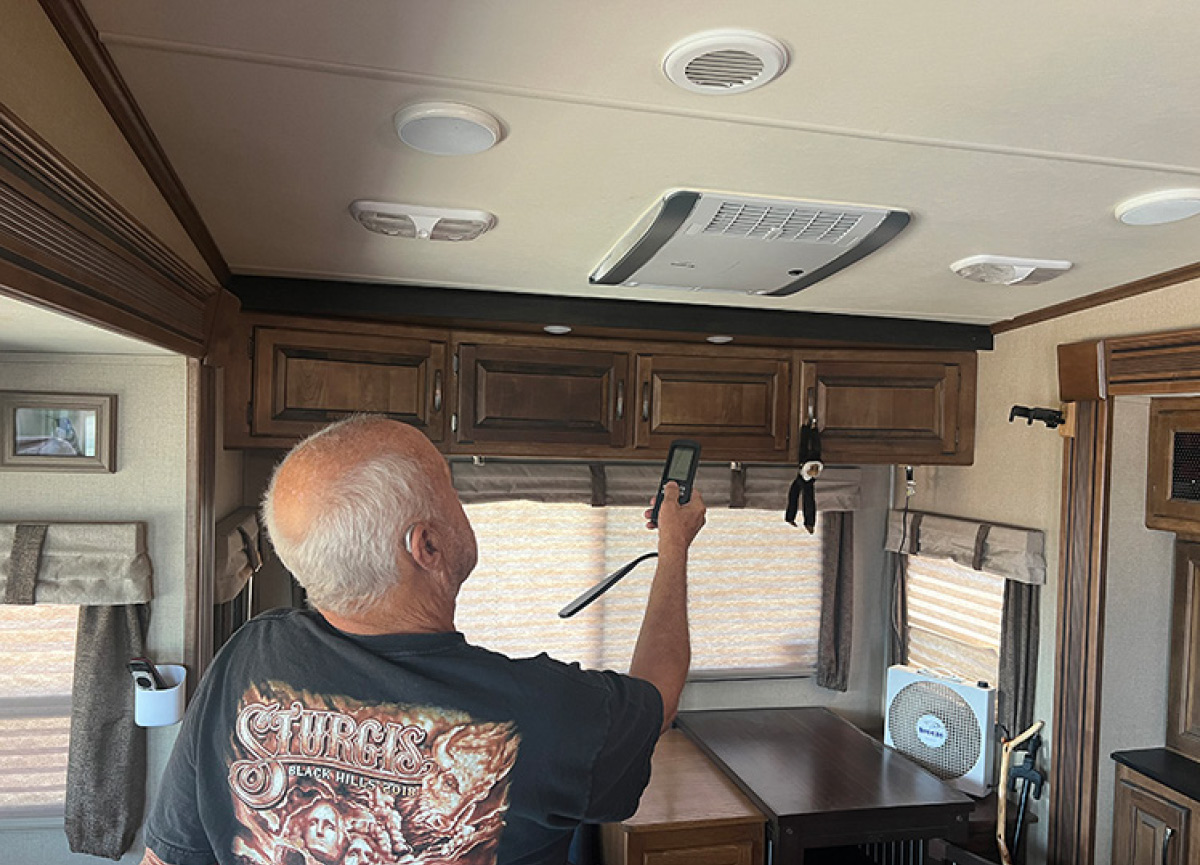

ummer is a wonderful time of the year. The days are longer, there’s plenty of pool and lake time, and your agenda can be packed with outdoor activities that are not only fun but can keep you fit. As romantic as that seems, though, the dog days of summer will usually have you running indoors to beat the heat — and keeping RVs cool is no exception.
Transforming the RV interior from an inferno to a cool environment is relegated to roof air-conditioning in the majority of RVs combing the highways. A few manufacturers worked with basement A/C units, but that has given way to the venerable rooftop units years ago. Today, the plethora of air-conditioners found on RV rooftops are more efficient than ever, with innovations from companies like Truma (truma.net) leading the charge. And technology has advanced the abilities to run smaller RV air-conditioning units (usually in Class B and smaller trailers) powered by sophisticated 12-volt DC systems. Add in improvements in rooftop-mounted and free-standing evaporative coolers and there’s no reason to sweat it out inside an RV any longer.


ne of the things I enjoy about buying a new RV is the customization of storage areas in the galley, pantry, closets and — maybe most importantly — the outside storage bay. You know the scenario: You “just have to have” tools and stuff that might come in handy someday, even if space is limited. I’m guilty as charged. But while I try to go through all the stored items and remove anything that hasn’t been used for a year or so, the process almost always gets undermined by second thoughts and “what if’s.”
If you want to maintain some semblance of order, you just have to be smarter than the stuff. It should be easy, right? Famous last words.
Since my new fifth wheel has less space in the main storage compartment than the old one, though, the challenge was on. Fortunately, you can get just about anything you want on Amazon, so with a little research — to discover new ideas on how to store frequently-used items like tools — I found some fantastic hooks that could be easily mounted in several locations and adapted to hold cordless tools while clearing out the clutter on the floor of the compartment.


ithout a water system, an RV cannot be self-contained. Water is needed for bathing, cleaning, cooking and, of course, drinking. Many of us don’t drink enough on a daily basis; throw in terribly bad tasting and smelling water and staying hydrated without using a clothespin on your nose can be difficult. No wonder the bottled water industry is so gigantic.
Unfortunately, beyond taste, water contaminated with bacteria, viruses and cysts, to name a few, can lead to medical problems — and such problems can crop up more frequently as RVers embrace boondocking and set up camp well away from campgrounds often fed by city water systems. Fortunately, water purification and filtration systems for RVs have reached new levels in sophistication and conditioning — to the point that even manufacturers are now including effective equipment as standard equipment on some models.

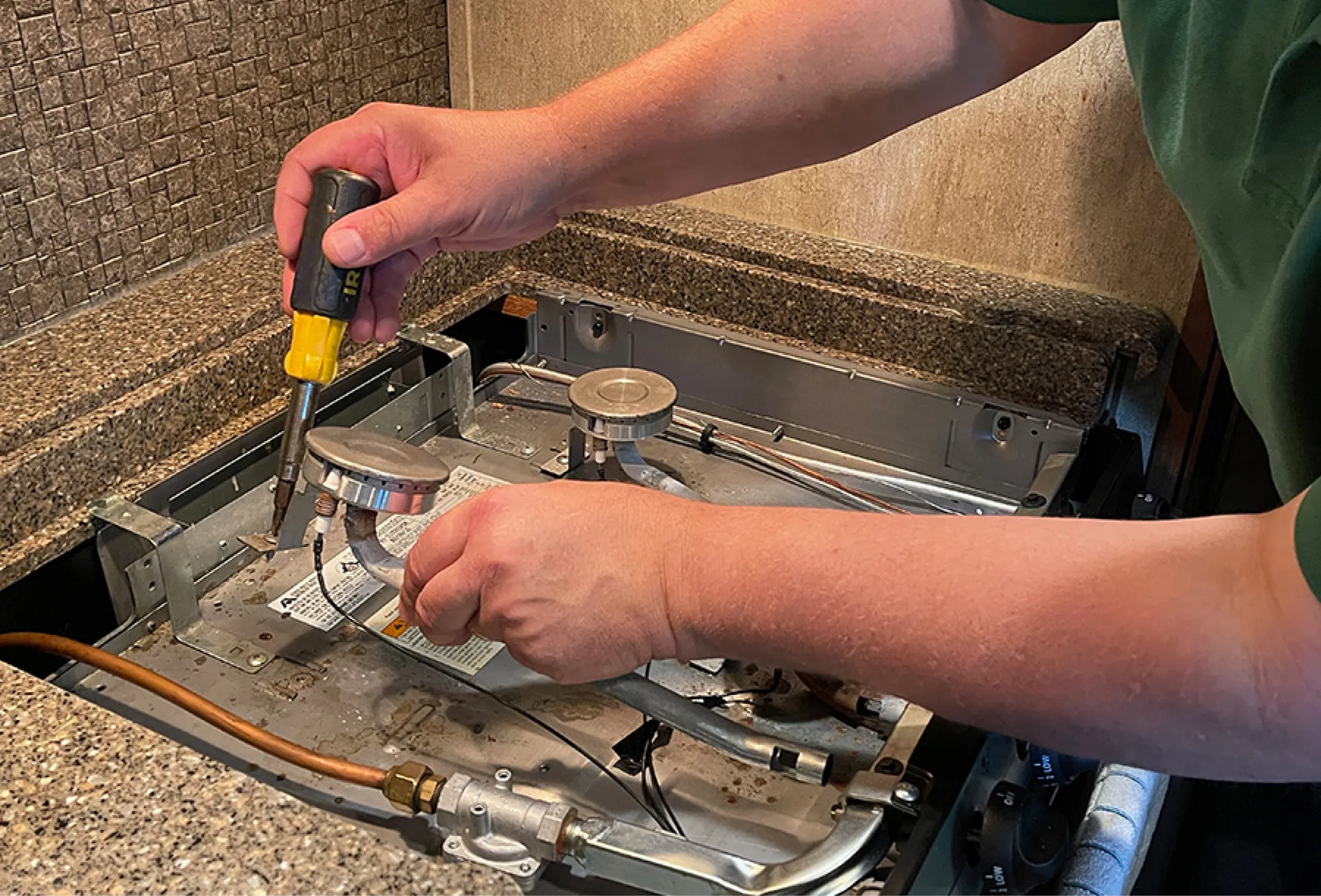
ne big reason for the recent boost in popularity of RVing is the ability to camp with all the basics. Granted, there will always be a segment that truly appreciates “roughing it” with a tent and campfire for cooking, but having the ability to grab a cold drink from a refrigerator, make a hot meal in an oven or on a cooktop, retreat from noonday sun into air-conditioned comfort or, conversely, turn on a furnace on chilly mornings makes the outdoors a lot more livable for many of us.
Galley equipment is especially important. Manufacturers do their part by equipping contemporary RVs with the same sort of appliances that are critical to meal prep in a traditional brick-and-mortar home — though they are a bit different. And, all things considered, they are amazingly resilient. However, time does take its toll, especially on equipment subjected to constant pounding during travel, and RV appliances do require more upkeep. Properly maintained, though, they should continue cooking up memories for years.

inding out that you have an issue with your air brakes on a 7% grade at an elevation of nearly 10,000 feet is not something that I’d recommend that you put on your bucket list.
Our stay in Buffalo, Wyoming, had been quite pleasant. A sleepy little town of 4,600, it sits about halfway between Mount Rushmore in South Dakota and Yellowstone National Park in Wyoming. After a quick stop in Deadwood, South Dakota, we felt that a couple of nights in Buffalo, Wyoming, would be a perfect spot to rest and explore.
Once in Buffalo, we decided to do a little exploring. After a day in the Jeep and on foot, we settled on a nice dinner at The Virginian restaurant in the Occidental Hotel. After 140 years of providing western hospitality, we think they’ve got it nailed. Try the bison.



